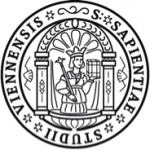Hamsters in the heart of Vienna, Austria
The European Hamster can be found in many European countries: it is present in Western Europe, where we can’t forget the populations are declining sharply and require protection, in Central Europe as well as in Asia. Even though this species is mainly found in fields, it is also naturally present in the urban areas in some cities. This in particular is the case in Vienna, Austria, where a population of hamsters lives in the gardens of a hospital right in the city centre.
- How did these animals come to the city? They were not introduced here by human beings: the city was built around them and it would seem that they adapted themselves to this new habitat.
- How can they survive in such a habitat? To find out, the CNRS* went to the site in May, 2015 for a little investigation.
In gardens of around 2.5 hectares, mainly composed of lawns, we counted an amazing amount of 579 active burrows!
The animals were easy to observe, as they were mainly active between 5:30 at 9:00 a.m. as well as between 6:00 and 9:00 p.m.
The video above was shot on May 1st 2015, at about 6:30 in the morning. We can see a young male hamster who is collecting food, including daisy flowers, and stocking them in his jowls. Once he has enough, he runs back to his burrow to drop off “his groceries.” Hamsters usually come right back out to continue looking for food. During an active period, hamsters will come and go several times to and from their burrow. Thanks to our observations we were able to determine that their diets in urban areas were made up of daisy petals, dandelion stems and flowers, clover leaves, chestnuts, acorns and earthworms.
Springtime also means its reproduction time! Males cover long distances to find a female. We were able to observe many interactions between males and females. And there was a happy ending as you can see on the video below!
Another high point during our stay: those living in Vienna really like hamsters. They observe everything we’re doing to make sure that we’re not hurting the hamsters at all, even though we just came to observe them!
We’d like to thank the Department für Verhaltensbiologie team, (Fakultät für Lebenswissenschaffen) from the Vienna University for having hosted us, (Eva Millesi and Carina Siutz).
*Fanny Ajak (a doctoral student at the DEPE-IPHC and in LIVE, which is managed by Odile Petit and Christiane Weber, as well as Matthieu Bergès, who is a first year Master’s degree student at the Tours University.


